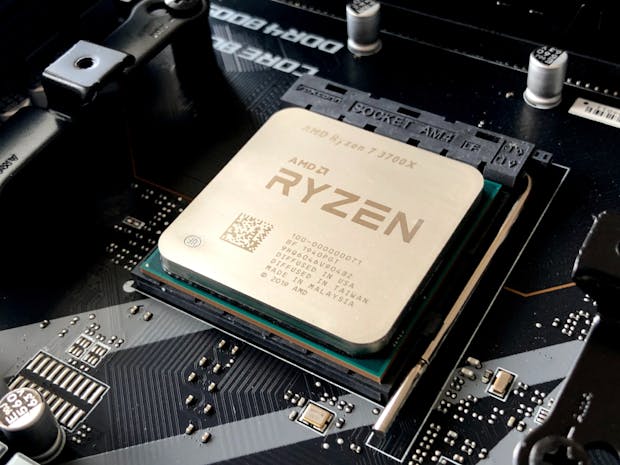stack some chips on AMD

a recent acquisition opens up new horizons for the chipmaker that’s outperforming its peers
Advanced Micro Devices or AMD as it’s popularly known has long been considered the ‘best of the rest’ behind Intel in the CPU market. it’s a tag that carries little scorn given that Intel corners over 75% of the segment, and especially since AMD recently reached its highest market share (almost all of the rest at 24.6%) since 2006. in addition to this, it’s also the second-best in the graphics card segment, clocking about 17% of the market share behind runaway leader Nvidia’s 83%. in after-hours trading on February 1, its stock price leapt 9.2%, having already registered a 2.2% jump in regular trading.
what’s driving this optimism in the California-based firm?
shining bright
as the latest quarterly report shows, all those second-best positions really add up when they are in multi-billion dollar industries. for the final quarter of 2021 AMD earnings soared 77% to $0.8 per share while sales climbed 49% to $4.8 billion, on a year-on-year basis. this was coupled with an upgrade in estimates for the current quarter and year, with the company expecting January to March 2022 to be its first to gross in excess of $5 billion in revenue. For all of 2022, AMD projects a revenue of $21.5 billion, up 31% from 2021.
turbo boost
that figure should be well supplemented by China finally greenlighting AMD’s acquisition of Xilinx. this is a huge deal since Xilinx is valued at approximately $40 billion, a third of AMD’s ~$120 billion market cap. the acquisition will grant AMD well established access to markets like aerospace, defence, automotive, and network infrastructure, where it currently has little to no presence. Xilinx also has a fast-growing data center business which reported a yearly growth of 81% in revenue for the October to December quarter, accounting for 11% of Xilinx's revenue for the period.
further, Xilinx allows AMD to actually boast of getting one up over Intel at least for a particular category. as the pioneer and leader in FPGA chips (field-programmable gate arrays), Xilinx pulled in $3.7 billion in revenue for the category in 2021 against Intel PSG’s (programmable solutions group) $1.9 billion. another notable metric is that Xilinx spent over $1 billion in research and development in the last year, about 28% of revenue. that’s far higher than AMD's own 14.9%, and should allow the latter to benefit from advancements in design while potentially reducing its own R&D expenditure.
the past couple of years have been a difficult period for any business relying on semiconductor chips, and yet AMD has proven more resilient than its peers. with demand for electronics only expected to rise along with the prices of the components, it appears to be one of the best propositions if one is looking to invest in the segment.



